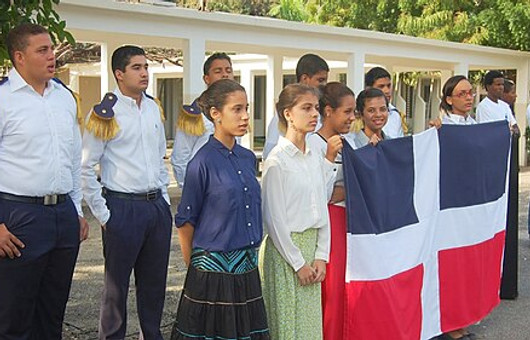

.jpg)
Mixed Latinos
The Huge Presence of Mixed People in Latin America is Beautifully Amazing
.jpg)
.jpg)
Its a Beautiful Thing...to be Mixed
The Dominican Republic
IT HAS OVER 70% MULATTO Population
The Dominican Republic is a multiracial nation where the majority of the population is of mixed-race heritage, a result of centuries of mixing between different ethnic groups. This rich cultural and genetic blend is a fundamental aspect of Dominican identity.
Historical Origins 🌎
The foundation of the Dominican racial mix dates back to the 1500s, when the island of Hispaniola was colonized by Spain. The initial population consisted of three main groups:
-
European settlers, primarily from Spain.
-
Enslaved Africans, brought to the island to work on plantations after the indigenous population was decimated.
-
The indigenous Taíno people, who were the original inhabitants.
From the start, intermixing among these groups was common. Over time, this process created a new, distinct Dominican ethnicity. Today, DNA studies show that the average Dominican has a genetic makeup that is predominantly European and West African, with a lesser degree of Indigenous Taíno ancestry.
Demographics and Self-Identity 🧬
Mixed-race people, often categorized as mulatto (of European and African descent) or mestizo (of European and Indigenous descent), make up a large majority of the population. A 2022 census found that over 70% of Dominicans identify as mixed-race. The term "indio" is also widely used in the Dominican Republic, not to mean someone of purely indigenous descent, but rather to describe a person with a skin tone between white and black.
Despite this mixed-race majority, there are complex issues surrounding race and identity in the country. The legacy of colonialism and the historical conflict with neighboring Haiti have led to a social dynamic where some Dominicans may emphasize their Spanish, or European, heritage while downplaying their African roots. This is reflected in the use of terms like "indio" to avoid a direct racial classification as black.
is a multiracial nation where the majority of the population is of mixed-race heritage, a result of centuries of mixing between different ethnic groups. This rich cultural and genetic blend is a fundamental aspect of Dominican identity.
Historical Origins 🌎
The foundation of the Dominican racial mix dates back to the 1500s, when the island of Hispaniola was colonized by Spain. The initial population consisted of three main groups:
-
European settlers, primarily from Spain.
-
Enslaved Africans, brought to the island to work on plantations after the indigenous population was decimated.
-
The indigenous Taíno people, who were the original inhabitants.
From the start, intermixing among these groups was common. Over time, this process created a new, distinct Dominican ethnicity. Today, DNA studies show that the average Dominican has a genetic makeup that is predominantly European and West African, with a lesser degree of Indigenous Taíno ancestry.
Demographics and Self-Identity 🧬
Mixed-race people, often categorized as mulatto (of European and African descent) or mestizo (of European and Indigenous descent), make up a large majority of the population. A 2022 census found that over 70% of Dominicans identify as mixed-race. The term "indio" is also widely used in the Dominican Republic, not to mean someone of purely indigenous descent, but rather to describe a person with a skin tone between white and black.
Despite this mixed-race majority, there are complex issues surrounding race and identity in the country. The legacy of colonialism and the historical conflict with neighboring Haiti have led to a social dynamic where some Dominicans may emphasize their Spanish, or European, heritage while downplaying their African roots. This is reflected in the use of terms like "indio" to avoid a direct racial classification as black.
.jpg)
.jpg)

.jpg)
.jpg)
.jpg)
.jpg)
.jpg)


.jpg)
Dominican:
King of Baseball
.jpg)
Spanish & Portuguese
The ONLY difference between mixed North Americans or Europeans, and Mixed Latinos, is that we speak different languages! That's it. Genetically, we are the exact same. Don't let language be a Barrier! Learn Spanish or Portuguese to better connect with the larger mixed community!
.jpg)




Podemos Conectar






